
축구 팀 핀 완벽 가이드
Table of Contents What Are Football Team Pins? Football team pins are small decorative items designed to represent football teams,
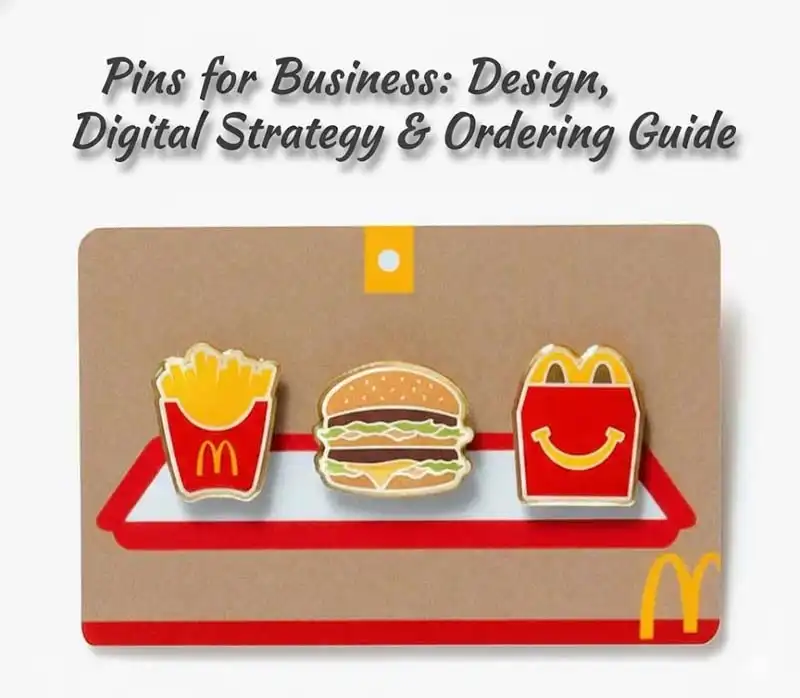
프로모션 핀은 브랜드와 조직이 고객과 소통할 수 있는 쉽고도 매우 효과적인 방법입니다.
이 작은 보물들은 마케터에게 큰 기회를 제공하며, 노출·친밀감·경제성을 독특하게 조합한 아이템입니다. 보편적이고, 시대를 초월하며, 다양한 상황에서 활용 가능합니다.
고객이 프로모션 핀을 착용하면, 그 자체로 걸어 다니는 광고판이 됩니다.
로고나 메시지가 담긴 센스 있는 핀은 시선을 끌고 호기심을 불러일으켜 사람들의 대화를 이끌어냅니다. 몇 초 만에 사라지는 디지털 광고와 달리, 핀은 가방, 재킷, 랜야드에 달려 오랫동안 남아 있습니다.
연구에 따르면 핀을 포함한 프로모션 제품은 수신자의 90%가 기억할 정도로, 온라인 광고나 인쇄 광고보다 높은 기억률을 보입니다.
휴대가 간편하기 때문에 착용자가 가는 곳 어디든 함께하며, 이는 브랜드가 지속적인 광고 비용 없이도 항상 새로운 사람들에게 노출된다는 것을 의미합니다.
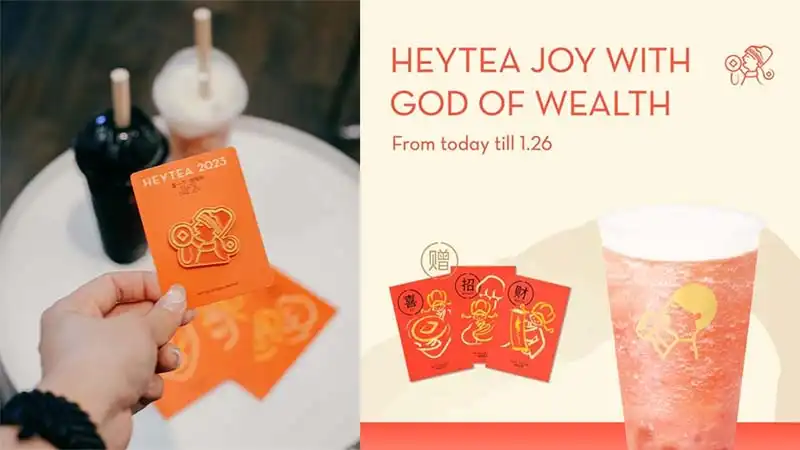
프로모션 핀은 단순한 실용적 도구 그 이상입니다.
사람들이 서로 연결되어 있다고 느끼게 해주는 감정적 도구입니다.
어떤 목적을 기념하거나, 이벤트를 기리거나, 단순히 공유된 가치를 반영하도록 디자인된 핀은 대상과 더 깊은 연결을 만들어냅니다.
예를 들어, 기념일이나 특별 캠페인을 기념하는 한정판 에나멜 핀은 수령자에게 존중받고 공동체의 일원이 된 듯한 감정을 줄 수 있습니다.
이러한 디자인이 단순히 아름답기만 한 것이 아니라 의미까지 담고 있다면, 받는 사람의 마음에 깊이 와닿아 그 가치를 느끼고 자주 착용하도록 만듭니다.
이러한 감정적 몰입은 브랜드 충성도를 높이고, 가벼운 고객을 열렬한 지지자로 변화시킵니다.

측면 | 프로모션 핀 | 전통적 광고 |
|---|---|---|
비용 효율성 | 낮은 일회성 비용 | 높고 반복되는 비용 |
수명 | 5년 이상 | 단기적 (며칠에서 몇 달) |
고객 참여 | 개인적이고 감정적인 연결 | 광범위하지만 비개인적 |
휴대성 | 매우 휴대하기 쉽고 착용 가능함 | 위치에 따라 제한됨 |
감사의 표시나 로열티 프로그램 보상으로 활용할 수 있어, 브랜드가 고객과 더 깊은 관계를 형성하는 데 도움이 됩니다.
구매 사은품, 추천 보상, 장기 후원자 감사 패로 제공되며, 이러한 핀은 감사와 인정의 의미를 담고 있습니다.
핀은 커뮤니티 감각을 형성하는 데 매우 뛰어납니다. 많은 고객들이 자신이 브랜드나 어떤 의미 있는 활동과 연결되어 있음을 상징하는 핀을 착용하는 것을 좋아합니다.
기업은 직원 포상과 같은 내부 용도로 핀을 사용할 수 있으며, 이는 브랜드 문화와 충성도를 강화합니다.
핀 디자인은 브랜드와 일관되어야 합니다. 이를 위해서는 브랜드를 즉시 알아볼 수 있는 형태, 색상, 로고를 선택해야 합니다.
예를 들어, 기술 회사는 혁신을 표현하기 위해 절제된 색감의 간결하고 기하학적인 디자인을 선호할 수 있으며, 반면 크리에이티브 에이전시는 예술적 스타일을 보여주기 위해 대담하고 밝은 핀을 선택할 수 있습니다.
핀은 작습니다 — 보통 1~2인치 정도 — 그래서 디자인은 단순하게 유지해야 합니다. 너무 많은 디테일이나 색상을 넣으면 전체 디자인이 복잡해 보이고 임팩트가 떨어집니다.
단순한 로고 핀은 디자이너의 도움 없이도 제작할 수 있으며, 브랜드 일관성을 유지할 수 있어 훌륭한 선택입니다.
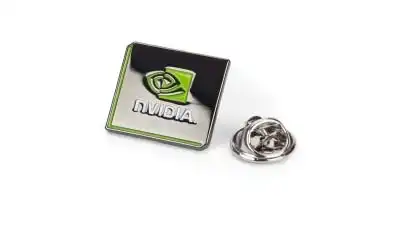
회사 핀의 소재는 핀의 외관과 질감을 크게 결정할 수 있습니다. 선택 가능한 옵션은 다음과 같습니다:
에나멜(소프트 또는 하드): 내구성이 뛰어나고 색상이 선명하며, 섬세한 디자인에 이상적입니다.
금속 합금: 저렴하지만 견고하며, 대량 생산에 적합합니다.
골드 또는 실버: 품격과 고급스러움을 더해줍니다.
플라스틱: 가볍고 경제적이며, 캐주얼한 행사에 적합합니다.
아크릴 또는 레진: 광택 있는 마감과 현대적인 매력을 제공합니다.
골드나 실버 같은 귀금속은 지위와 럭셔리를 상징하기 때문에 프리미엄 브랜드용으로 특히 선호됩니다.
적절한 소재 선택은 핀의 목적과 예산에 따라 달라집니다.
창의적으로 시선을 끌기 위해 로고에 브랜드 색상, 태그라인 또는 기타 브랜딩 요소를 조합하여 시각적으로 매력적인 핀을 만들어보세요.
예를 들어, 기발한 이미지나 독특한 형태를 사용하면 핀이 더 기억에 남습니다. 핀은 착용하면 매우 눈에 띄는 아이템입니다.
하나의 핀만으로도 수백 명에게 노출될 수 있으니, 이는 매우 강력한 홍보 수단입니다.

실력 있는 디자이너와 협업하면 핀이 더욱 돋보일 수 있습니다.
전문가의 참여는 디자인이 깔끔하고 균형 잡히며 소규모 생산에 최적화되도록 보장합니다.
디자이너는 색상 제한이나 어떤 소재가 어떤 공정과 잘 맞는지 등 기술적인 측면에서 올바른 방향을 제시해 줄 수 있습니다.
생산에 4~6주가 걸릴 수 있으므로 반드시 미리 계획해야 합니다.
만일을 대비해 핀을 조금 더 여유 있게 주문하세요!
핀을 마케팅에 활용하는 것에 대하여: 핀의 매력은 개인적 연결을 형성하고, 충성도를 강화하며, 오래 남는 인상을 만드는 잠재력에 있습니다.
핀을 마케팅에 영리하게 활용하면 기업은 브랜드 가시성과 고객 참여를 높일 수 있습니다.
박람회, 콘퍼런스, 지역 행사 등은 핀을 나누어주기에 훌륭한 장소입니다.
누구나 좋은 스웨그 아이템을 좋아하며, 핀은 행사에서 당신의 존재감을 각인시키는 완벽한 방법입니다.
잘 만든 핀은 대화를 이끄는 계기가 되어 참석자들이 브랜드를 알아가도록 유도할 수 있습니다.
예를 들어, 미니멀한 로고가 새겨진 핀을 나누어주는 테크 스타트업이라고 가정해봅시다.
참석자들은 컨퍼런스 전시장을 떠난 후에도 당신의 부스를 기억합니다. 우리는 조직이나 신념을 표현하기 위해 오래전 1차 세계대전 시기부터 핀을 사용해 왔습니다.
이러한 맥락은 깊이를 더해, 핀을 단순한 스웨그에서 소속감을 나타내는 실제적인 상징으로 바꿔줍니다.
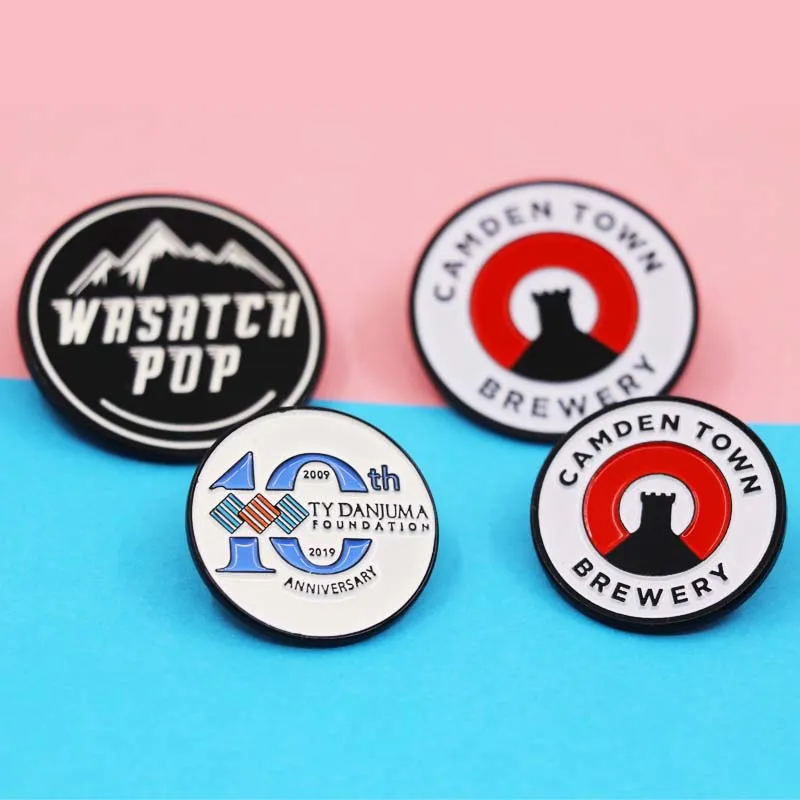
제품 패키지에 핀을 포함하면 소비자에게 예상치 못한 부가가치를 제공할 수 있습니다.
제품을 개봉하면서 브랜드 로고가 들어간 프리미엄 라펠 핀을 발견한다고 상상해보세요. 이런 작은 디테일만으로도 언박싱 경험이 마법처럼 특별해질 수 있습니다.
조직에게는 브랜드를 더욱 공고히 하고, 수령자가 핀을 착용하고 자연스럽게 홍보하도록 유도하는 효과가 있습니다.
이 경우에는 제품과 패키지의 전체적인 느낌과 잘 어울리는 심플한 핀이 가장 효과적입니다.
이는 니치 시장을 공략하거나 프리미엄 이미지를 추구하는 브랜드에 특히 유용합니다.
소셜 미디어에서 인플루언서나 브랜드 앰배서더와 협업하여 프로모션 핀의 도달 범위를 넓히세요.
인플루언서들은 핀을 패션 아이템으로 착용해, 게시물 속에 자연스럽게 녹여낼 수 있습니다.
예를 들어, 패션 블로거가 핀을 스타일에 활용하면, 그의 또는 그녀의 관객에게 흥미를 불러일으킬 수 있습니다.
협업 게시물은 핀의 디자인과 의미를 중심에 두어, 브랜드가 독자들의 감정에 더욱 깊이 다가갈 수 있게 합니다.
핀 디자인도 브랜드와 일관되도록 제작해야 하며, 이는 전체 마케팅 활동의 일관성을 유지하는 데 중요합니다.
프로그램 목표 정의하기: 핀을 구매, 추천, 또는 참여에 대한 보상으로 사용할 것인지 결정한다.
목적에 맞게 핀 디자인하기: 디자인을 미니멀하게 유지하고 브랜드 미학과 일치하도록 한다.
명확한 기준 설정하기: 고객이 핀을 얻는 방법을 명확히 제시하여 투명성을 높인다.
프로그램 홍보하기: 이메일, 소셜 미디어, 매장 디스플레이를 활용하여 인지도를 높인다.
보상 후 고객과의 지속적 소통 강화: 수령자들이 핀 사진을 온라인에 공유하도록 장려하여 자연스러운 화제를 만들어낸다.
저희는 가능한 최고의 품질을 보장하기 위해 세심한 공정을 거쳐 프로모션 핀을 수작업으로 제작합니다.
적합한 제조업체를 선택하는 일부터 생산 일정 확정까지, 모든 과정이 디자인 및 마케팅 목표를 충족하는 제품을 보장하는 데 포함됩니다.
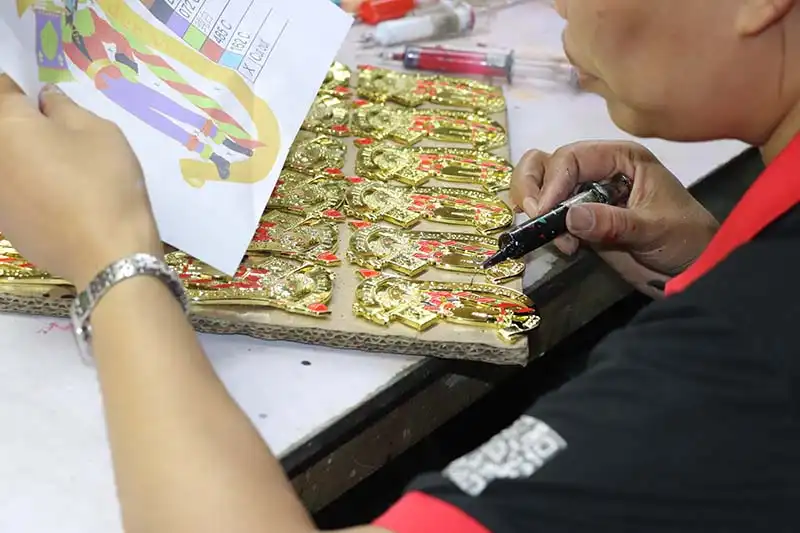
핵심은 맞춤형 핀 제작 경험이 있는 제조업체를 선택하는 것입니다.
숙련된 제조업체는 복잡한 기술적 과정 전반을 안내해줄 뿐만 아니라, 일관된 품질까지 보장해 줍니다.
에나멜, 다이캐스트, 소프트 에나멜 등 다양한 핀 유형을 제공하고, 작업물 갤러리를 보유한 제조업체를 찾아보세요.
예를 들어, 도금에 능숙한 제조업체는 골드, 실버, 앤틱 코퍼 같은 마감 옵션을 제공하여 핀의 매력을 높여줄 수 있습니다.
핀의 종류는 비용과 외관에 큰 영향을 줍니다.
유리처럼 반짝이는 광택을 가진 에나멜 핀은 디테일이 많은 아트워크에 매우 적합합니다.
다이캐스트 핀은 더 텍스처가 있고 3D 효과가 뛰어나며, 깊이감 있는 로고나 형태에 완벽합니다.
예를 들어, 예산이 빠듯하면서 색상이 필요하다면 소프트 에나멜이 가장 적합한 선택일 것입니다.
하드 에나멜은 매끄럽고 오래가는 마감이 특징이지만, 추가적인 연마 과정 때문에 비용이 더 높아지는 편입니다.
여기서의 선택은 브랜드 이미지와 핀을 사은품으로 사용할지, 독점 굿즈로 사용할지에 따라 결정해야 합니다.
디자인 및 몰드 제작: 이 과정은 디지털 디자인을 몰드로 변환하는 것에서 시작됩니다. 이것이 이후 모든 단계의 기반이 됩니다.
주조 및 클리닝: 구리선을 맞춤 디자인 형태로 성형한 후 묶어서 강화용 시럽에 담급니다. 초음파 오일 세척으로 얼룩을 제거하여 전기 도금 준비를 마칩니다.
전기 도금 및 색채 작업: 도금은 핀을 금이나 은과 같은 금속 마감재에 담그는 과정입니다. 예를 들어, 적동은 두 번 도금하고, 금 도금은 네 번 진행하기도 합니다. 이후 색상을 입히는데, 보통 도금–채색–재도금 순서로 이루어집니다.
연마: 각 핀은 측면 연마를 포함해 수작업으로 폴리싱됩니다. 이를 통해 모든 표면이 매끄럽고 흠 없이 완성됩니다.
조립: 핀 바늘은 접착제 또는 은용접으로 부착됩니다. 은용접이 더 오래가기 때문에 선호됩니다.
품질 관리: 각 핀은 원래 디자인과 일치하는지 검수되어 정확성과 일관성을 보장합니다.
핀 디자인의 복잡도와 제조 과정의 단계에 따라 생산 일정은 몇 시간에서 며칠까지 다양할 수 있습니다.
제조업체와는 미리 협력하여 마감 기한을 설정해야 합니다. 특히 핀이 더 큰 마케팅 캠페인의 일부로 사용될 경우 더욱 중요합니다. 예를 들어, 디테일이 많은 에나멜 핀은 전기 도금과 채색 과정에 추가 시간이 필요할 수 있습니다.
이를 통해 막바지 지연을 피하고, 필요한 시기에 핀이 준비되도록 할 수 있습니다.
프로모션 핀은 캠페인이 원하는 효과를 내고 있는지 확인하기 위해 반드시 측정되어야 합니다.
기업은 지표와 인사이트를 함께 통합함으로써, 판매된 수량이라는 구체적인 성과뿐 아니라 브랜드 인지도라는 보다 추상적인 영향까지 측정할 수 있습니다.
배포 현황을 추적하는 것이 첫 단계입니다.
간단한 스프레드시트나 데이터베이스만으로도 제작된 핀 수, 배포된 수, 그리고 누구에게 전달되었는지를 기록할 수 있습니다.
내부 팀이든 외부 파트너든, 배포 담당자들과 협력하여 진행 상황을 올바르게 추적하고 있는지 확인하세요.
배포 데이터를 확보한 후, 고객 참여도와 비교하여 핀이 효과를 내고 있는지 확인하세요.
예를 들어, 캠페인으로 인해 발생한 웹사이트 방문, 소셜 미디어 참여, 이메일 구독 증가 등을 모니터링하세요.
무역 박람회에서 5,000개의 핀을 배포한 기업은 웹사이트 트래픽이 15% 증가하는 것을 관찰할 수 있습니다.
인사이트를 더욱 강화하기 위해, 이러한 지표에 인구통계 정보를 결합하여 캠페인에 가장 적극적으로 반응한 고객 세그먼트를 파악하세요.
측정을 위한 주요 지표와 방법은 다음과 같습니다:
배포량: 배포된 핀의 총 수량.
참여율: 캠페인과 연계된 클릭률, 소셜 미디어 좋아요 또는 공유 수.
전환율: 참여한 고객 중 구매와 같은 원하는 행동을 완료한 비율.
비용 분석: 배포 비용을 캠페인 전체 예산과 비교하여 측정합니다.
고객 피드백은 유용한 정성적 데이터를 제공합니다.
기업은 설문조사, 온라인 리뷰, 직접적인 대화를 통해 피드백을 수집하여 핀의 영향을 파악할 수 있습니다.
질문은 핀의 디자인, 가치, 또는 핀이 브랜드 관심을 유도했는지 등에 대해 이루어질 수 있습니다.
예를 들어, 설문조사에서 소비자들은 핀 디자인은 기억에 남지만 브랜드 요소는 너무 약했다고 답할 수 있습니다.
이러한 인사이트를 바탕으로 향후 디자인을 조정하면 고객과 더욱 깊이 연결될 수 있습니다.
결국 프로모션 핀의 성공은 보통 매출이나 리드 생성과 직접적으로 연관됩니다.
캠페인 전후의 매출을 간단히 비교하는 것은 재정적 영향을 파악하는 쉬운 방법입니다.
예를 들어, 핀 증정 후 매출이 10% 증가했다면 이는 긍정적인 신호입니다.
여기서 핵심은 ROI입니다. 기본적으로 ROI는 수익에서 비용을 뺀 뒤, 그 값을 비용으로 나눈 것입니다.
매출뿐 아니라, 새로 생성된 리드나 재구매 고객 비율을 모니터링하면 전반적인 이점을 파악할 수 있습니다.
이러한 결과를 살펴보면 성과를 확인할 수 있을 뿐만 아니라, 향후 캠페인을 최적화하기 위한 인사이트도 얻을 수 있습니다.

Table of Contents What Are Football Team Pins? Football team pins are small decorative items designed to represent football teams,
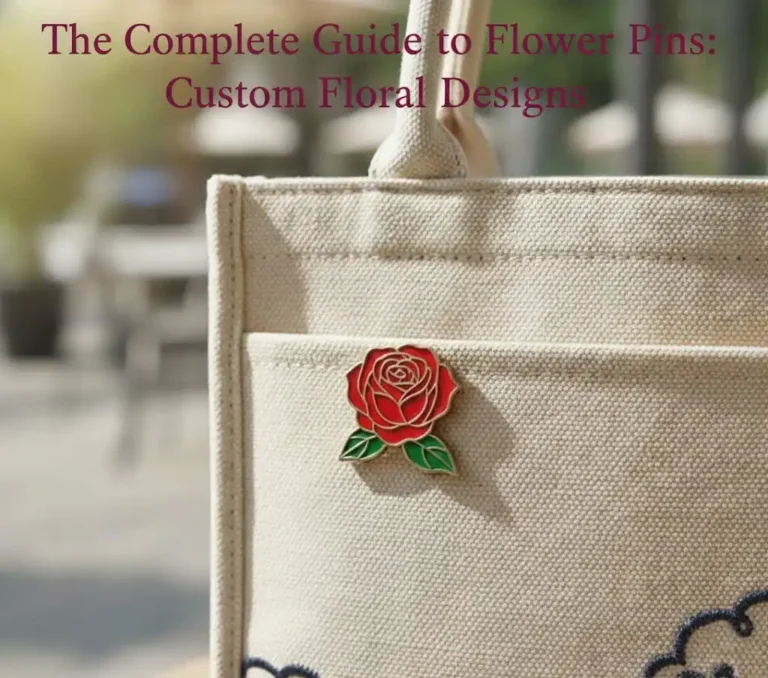
Table of Contents What is a Flower Pin? Flower pins, often called flower lapel pins or boutonnieres, serve as ornamental
5번 통안 로드,
동구 샤오란 마을,
광둥성 중산,
중국
저작권 © 2024 Zhongshan Peakeen Gifts Supply Chain Co., Ltd. 판권 소유. PeaKeen 제공 개인정보 처리방침
비즈니스 성장을 위해 함께 노력합시다!
비즈니스 성장을 위해 함께 노력합시다!
10% 꺼짐